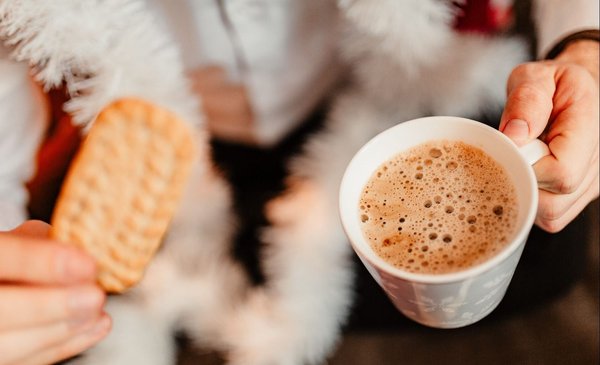choose a coffeehave a method to prepare it, good quality water and understand that The enemies of this infusion are light, oxygen and humidity.are the keys that Max García, barista and Nestlé coffee expert for Uruguay, Argentina and Paraguay shared with Coffee and Business.
Making a good coffee at home is possible, and for that, Preserving coffee properly is essential. The coffee should be stored dry and in a dark place, such as a cupboard, but it is also possible to store it in the freezer if it is dry cold.
Each person can have their own coffee recipe. In experimenting there is the possibility of trying new things and discovering what type of preparation you like best, but the ratio –amount of water and coffee– with which you should start, according to García, is always 1-15: 1gr of coffee per 15 water.
attention to water
The barista indicated that if the coffee is prepared with mineral water it is better, since “good water will reveal the true flavor of that coffee bean”, while a water that is very salty it will affect the taste, because “salt opens the coffee”.
The ideal water temperature for making coffee is between 90° and 95°, but, as he commented, “you don’t have to be afraid of the temperature.”
A good method to prepare coffee at home is by filtering, he indicated, for example by dripping. “You start to try what’s wrong with you and you have a notebook with your own coffee recipes, where you write down, ‘so much water, so much coffee’, so you identify, try and grow. Making coffee is a ritual, but also an enjoyment. For me it’s like meditating,” he said.
With or without sugar?
While the interview was taking place, García had a coffee. “I feel acid notes, typical of a Colombian coffee produced at altitude, a super fruity coffee. If I put sugar in it, all that goes to a standardized flavor, and it doesn’t make sense. no sugar used“, he answered the question of whether or not coffee should be sweetened.
“We have to start accustoming our palates to taking infusions without sweetening them. Coffee is a fruit, and like any fruit we expect it to be juicy, tasty and sweet, but it has a roasted flavor, which is why there is a dichotomy on your palate. But those are the curiosities that we have to start taking advantage of,” he stressed.
Since the start of the pandemic, more people have been interested in learning about coffeehe commented, which has led to market growth, not only in the classic coffee-producing countries, but in others such as Uruguay, Argentina or Chile.
In Uruguay, per capita coffee consumption is 146 cups. Eight out of 10 Uruguayans drink coffee, the second hot drink of choice after mate. And sales in the last five years increased 15%.
“Everyone began to learn about coffee, so there are many specialty coffee shops. Colombia, Africa, Indonesia, you will always have a different coffee and your palate will grow in a fantastic way,” he said. In these scenarios, baristas are essential, he commented, since in addition to preparing the coffee, they can share with consumers information about the drink they are drinking, for example where the coffee bean was produced or how the drying process was.
In the coffee belt there are more than 80 coffee-producing countries, some of them Brazil, Colombia or Ethiopia, he highlighted. “The exploration never ends,” she added.
young baristas
García visited Uruguay within the framework of the launch of the Nestlé Coffee Season, and the Young Baristas program, of the Nestlé Professional division, a free training in which more than 30 young people will participate. In the training, which is focused on promoting the development of this profession to help young people find a job, a scholarship will also be raffled off to study barista at the Uruguayan Hotel Tourism Institute (ITHU).
















